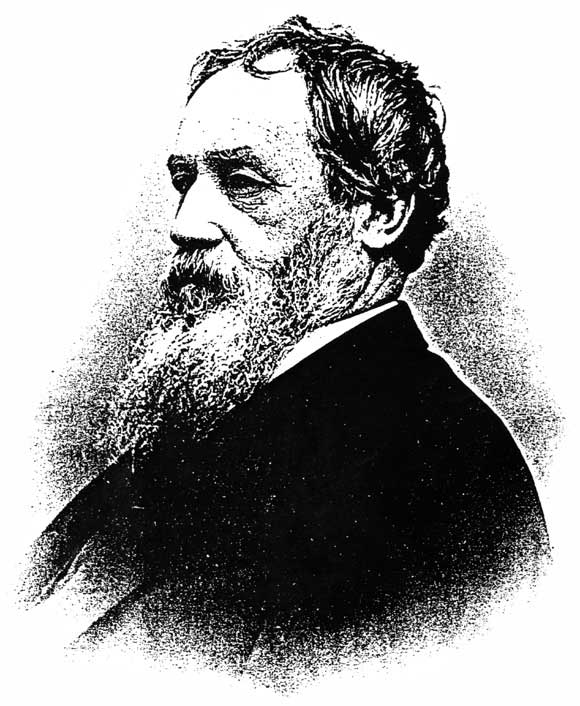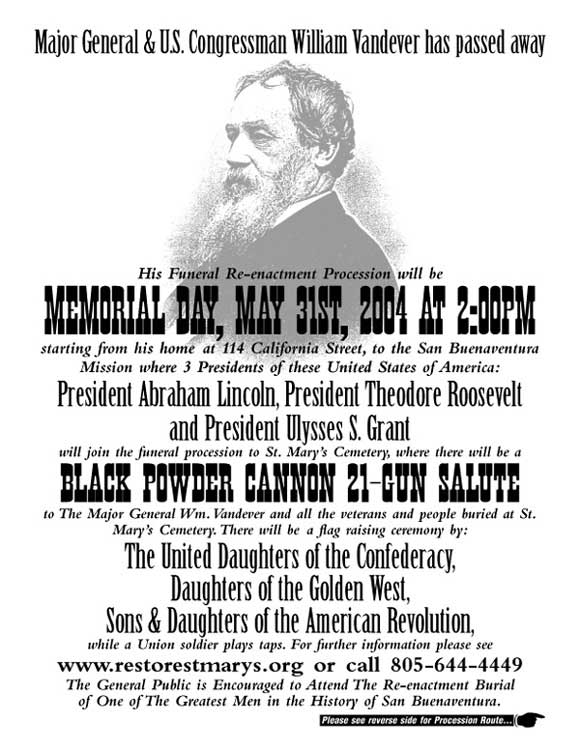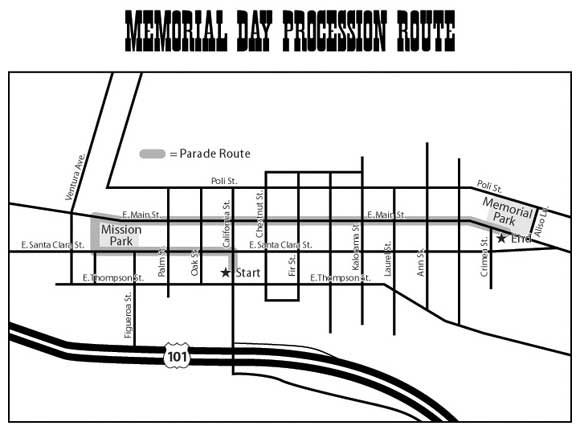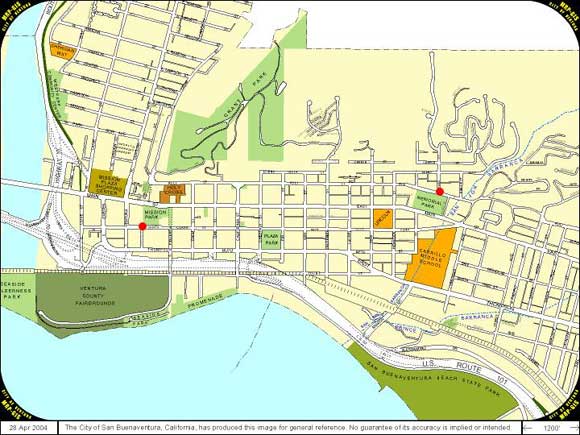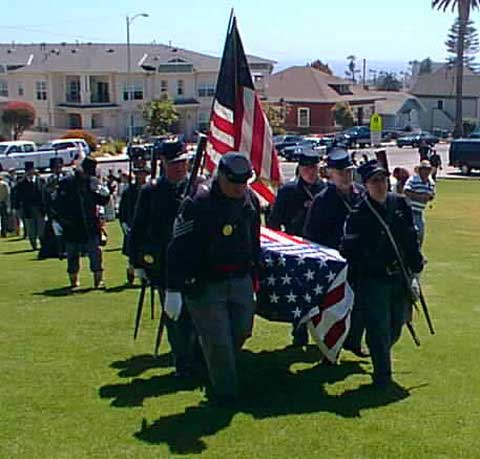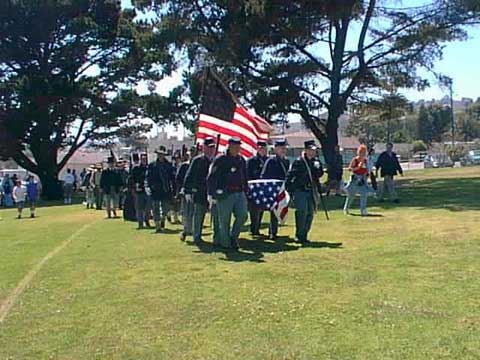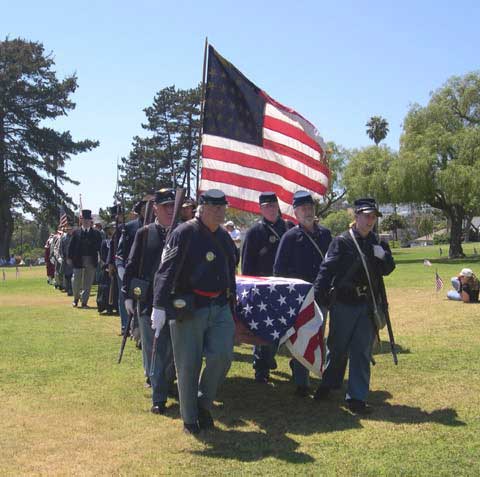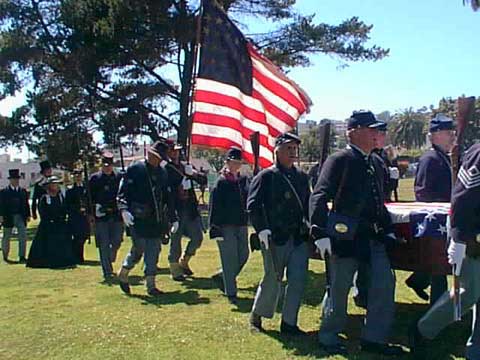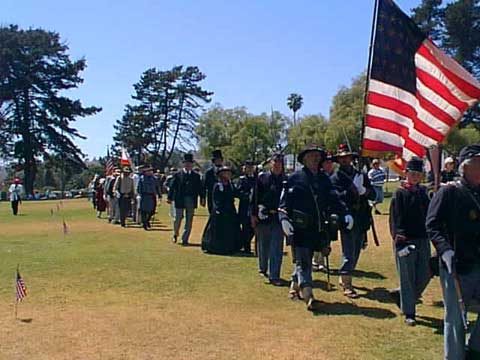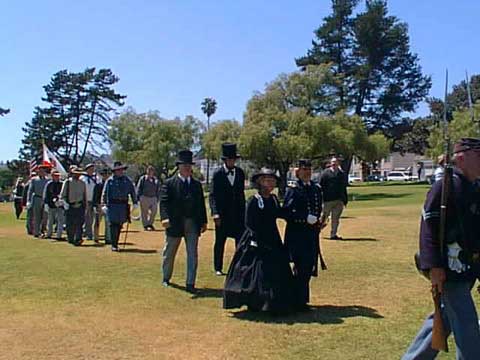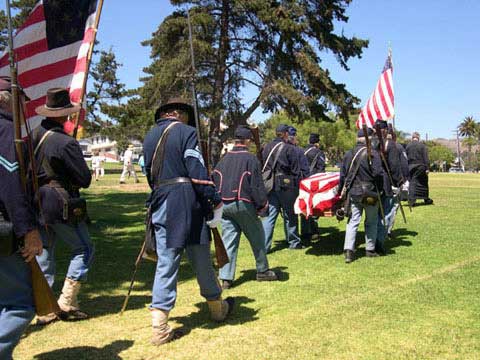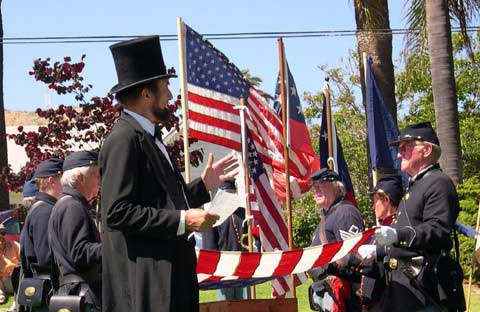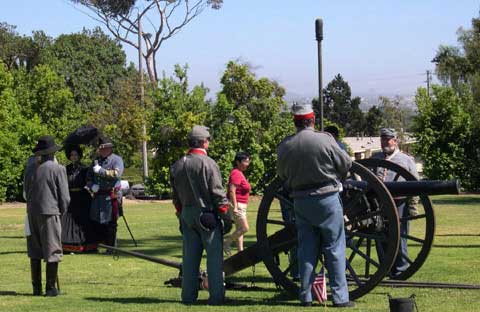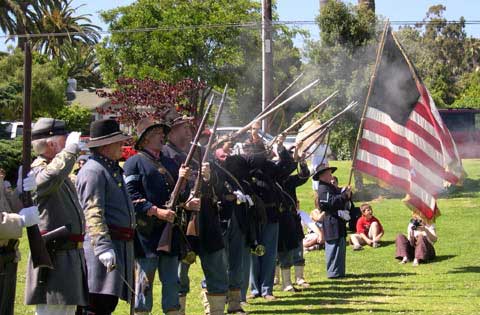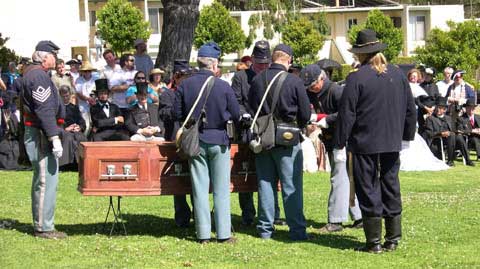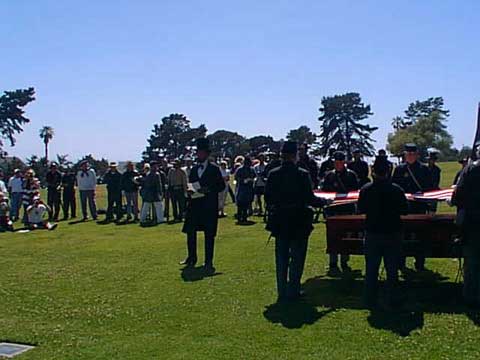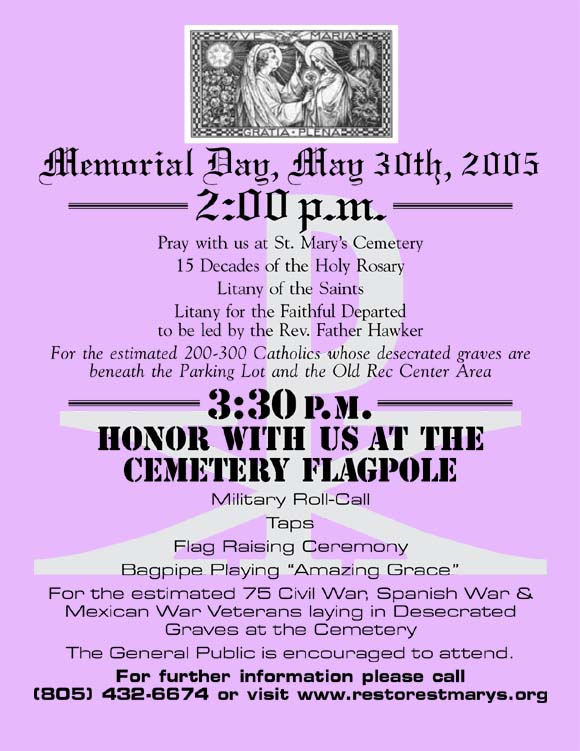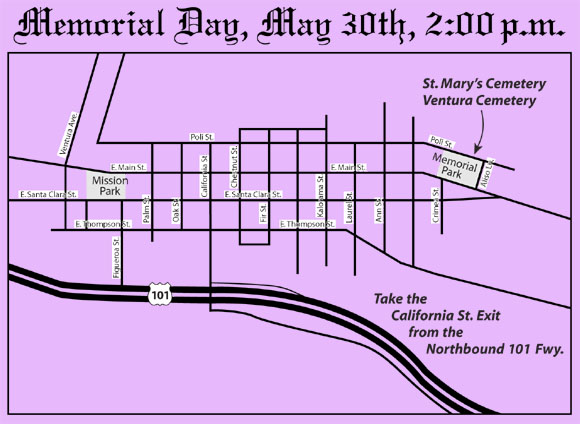Help See a slide show of this last Memorial Day event
Commemorate Memorial Day Procession |
Article from the Charles C. Myers Library of the University of Dubuque (Iowa) University Special Collections and Subject Bibliographies The Papers of William Vandever (1817-1893) Biography Vandever read law and, during the early 1850s, joined the law firm of Benjamin M. Samuels (Democrat). While practicing law, Vandever quickly became interested in politics. In 1856, he was a delegate to the convention which organized the Republican party in Iowa. In 1858, Vandever was nominated by the Republicans as the candidate for the U. S. Congress, and he won the election. He attended the convention which nominated Abraham Lincoln as the Republican candidate for President in 1860. He was re-elected for the U. S. Congress in 1860, defeating Benjamin M. Samuels. When the Civil War began, he left the Congress and volunteered for the Army. Governor Kirkwood of Iowa appointed him, on September 24, 1861, as a Colonel in the Ninth Infantry which was formed in Dubuque. He was promoted to Brigadier General on November 29, 1862 and to Brevet Major General on June 7, 1865. He returned to Dubuque at the close of the war and considered running for the congressional seat he vacated to enter the Army, but decided to withdraw in favor of William B. Allison who won the election. Later, Allison would become a U. S. Senator. During 1865-1872, Vandever practiced law, promoted the expansion of railroads, and supported Republican candidates for elected offices. President Grant appointed him as U. S. Indian Inspector in 1873, and he served until1878. He pursued mining interests, particularly in the Southwest (1878-1880). His sons, Charles and William Jr., were in business ventures in the Southwest. Vandever and his wife, with their two daughters, Florence and Mary, moved to California in 1884. Vandever's interest in political life prompted him to run for the U. S. Congress. He was elected in 1886, re-elected in 1888, and announced, in 1890, that he would not seek re-election. William Vandever died on July 23, 1893. In the early 1880s, William Vandever was a member of the Board of Trustees of the German Presbyterian Theological School of the Northwest which would become the University of Dubuque. It appears that he donated his papers (the latest date being 1881) and some of his pamphlets and books (the latest being 1883) to the institution before he moved to California. Papers These documents throw light on the condition and aspirations of Indians with whom Vandever was acquainted; Vandever as a man who was friendly with the Indians and critical of the U. S. Army; and the Bureau of Indian Affairs, the Department of the Interior, and the War Department. There are remarkable passages in the documents in this collection. For example: In Vandever's letter of January 4, 1877, he laments, "It is a shame, for a great nation, to disregard the principles of equity . . . [in dealing with the Indians]." In letters and reports, Vandever addresses the issues of the "true causes of the Indian Wars" and of "the injustice practiced upon the Indians." Vandever was not re-appointed as U. S. Indian Inspector in early 1878, the subject of an exchange of telegrams and letters between his friend, Senator William B. Allison, and himself in late 1877 and early 1878, throwing light upon the process of government appointments, particularly of one who was critical of government policy toward the Indians. After Vandever left the Bureau of Indian Affairs, he continued to be interested in the plight of the American Indian and drafted an article for the Moravian Missionary Society (August, 1881). Indeed, various letters and reports prepared during the years as U. S. Indian Inspector demonstrate a keen interest in Christian missions to the Indians. Incidentally, Special Collections contains published reports of the Bureau of Indian Affairs from 1867 to 1879 and other government publications, some of which bear the signature, "Wm Vandever," on the title page and A Compilation from the Revised Statutes of the United States; . . . , relating to Indian Affairs (Washington: Government Printing Office, 1875), signed on the title page, "Wm Vandever U. S. Indian Inspector." Postscript We encourage interested persons to use The Papers of William Vandever and related resources in the Charles C. Myers Library to uncover the fascinating story of his varied career, to better understand the history of the American West, and to gain unique insights into the condition and aspirations of the American Indian. Detailed information is available in " 'Good Words . . . from One of Iowa's Best Men': Introducing the Papers of William Vandever, U. S. Indian Inspector (1873-1878)" and "It is a Shame. . . to Practice Injustice Upon the Indian': Selected Papers of William Vandever, U.S. Indian Inspector (1873-1878)."
Memorial Day, 30 May 2005 May 30 2005
home | articles
| back to top | photos
| records | contact
us
Copyright 2018 - 2019 Restore St. Mary's Cemetery. |

